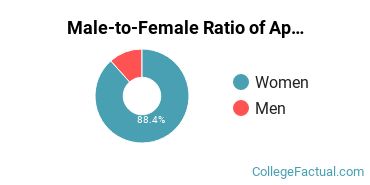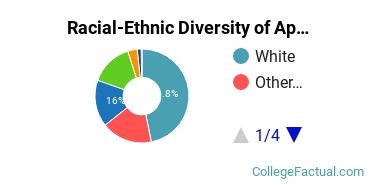 by our College Data Analytics Team
by our College Data Analytics TeamApplied Behavior Analysis is a concentration offered under the clinical, counseling and applied psychology major at Capella University. We’ve gathered data and other essential information about the master’s degree program in applied behavior analysis, such as if the program is offered online, ethnicity of students, how many students graduated in recent times, and more.
You can jump to any section of this page using the links below:
Part-time graduates at Capella University paid an average of $547 per credit hour in 2019-2020. This tuition was the same for both in-state and out-of-state students. The following table shows the average full-time tuition and fees for graduate student.
| In State | Out of State | |
|---|---|---|
| Tuition | $14,767 | $14,767 |
If you’re interested in online learning, you’re in luck. Capella University does offer online classes in its applied behavior analysis master’s degree program. To see if the school offers distance learning options in other areas, visit the Capella University Online Learning page.
Women made up around 88.4% of the applied behavior analysis students who took home a master’s degree in 2019-2020. This is about the same as the countrywide number of 86.5%.

Racial-ethnic minority graduates* made up 36.3% of the applied behavior analysis master’s degrees at Capella University in 2019-2020. This is about the same as the nationwide number of 37%.

| Race/Ethnicity | Number of Students |
|---|---|
| Asian | 22 |
| Black or African American | 99 |
| Hispanic or Latino | 108 |
| Native American or Alaska Native | 2 |
| Native Hawaiian or Pacific Islander | 0 |
| White | 315 |
| International Students | 9 |
| Other Races/Ethnicities | 118 |
You may also be interested in one of these majors related to applied behavior analysis.
| Related Major | Annual Graduates |
|---|---|
| Clinical Psychology | 71 |
| Counseling Psychology | 1 |
| Industrial & Organizational Psychology | 105 |
| Educational Psychology | 51 |
| Family Psychology | 14 |
View All Applied Behavior Analysis Related Majors >
*The racial-ethnic minorities count is calculated by taking the total number of students and subtracting white students, international students, and students whose race/ethnicity was unknown. This number is then divided by the total number of students at the school to obtain the racial-ethnic minorities percentage.
More about our data sources and methodologies.